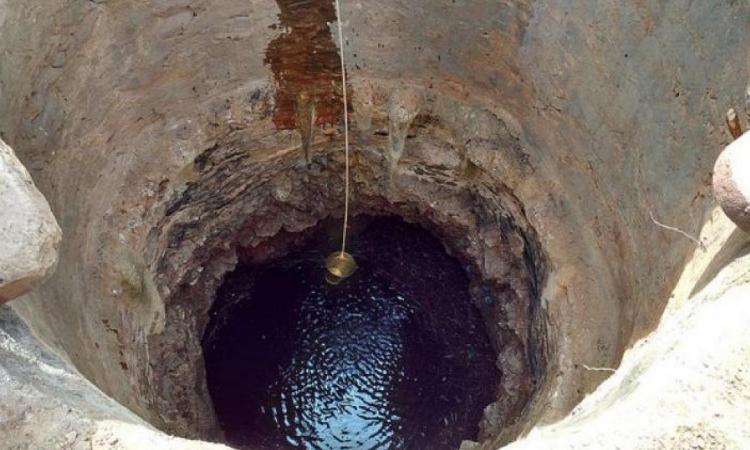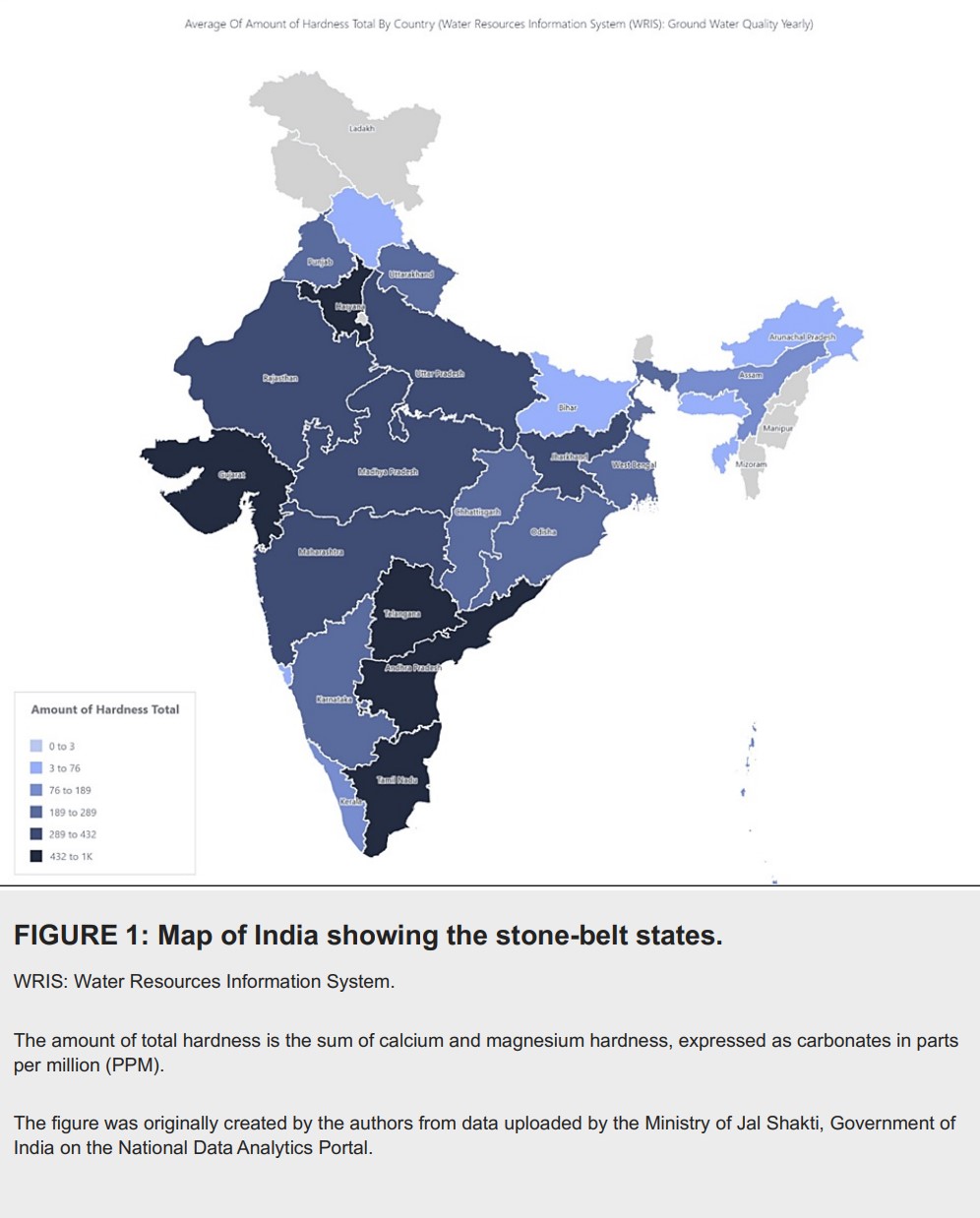
While good water quality is crucial for health and survival, contamination of water resources continues to be a daunting challenge in India with 1,95,813 habitations in the country having poor water quality. Water pollution has caused more than half a million deaths in India in 2019, according to a recent Lancet report
One of the important health concerns linked to poor water quality is kidney stone diseases (KSDs, i.e., nephrolithiasis, ureterolithiasis, and cystolithiasis), However direct evidence on the relation between the two is scanty. In India, kidney stone disease (KSD) burden among populations extends right from the Himalayas to central India, spanning the northern and western states. However, the ecological and environmental determinants which lead to KSD are not well understood informs this study titled 'Groundwater hardness and alkalinity as risk factors for kidney stone disease in Alwar, India: An ecological study published in Cureus.
Previous studies from India have shown that drinking less water along with other factors such as gender, increased age, sedentary lifestyles, and diets rich in fats etc increases the risk of KSD. The stone-belt states in India are those that have higher levels of hardness and TDS in the groundwater and include the states of Tamil Nadu, Telangana, and Andhra Pradesh in the south' Gujarat, Maharashtra, and Rajasthan in the west' Madhya Pradesh in the center, Punjab, Delhi, and Haryana in the north and Bihar and West Bengal in the east. However, studies on groundwater quality parameters of the stone-belt states are scarce.

People in the semi-arid districts of Alwar, Rajasthan still use groundwater for drinking. This study compares groundwater quality in Alwar with the rest of Rajasthan, and explores the connections between groundwater quality and prevalence of kidney stone disease in the region. The study looks at the morbidity profile of surgical in-patients in the same district, with special emphasis on kidney stone disease (KSDs).
Groundwater quality parameters, like calcium, magnesium, chloride, fluoride, iron, electrical conductivity, TDS, etc are assessed in the study. WHO recommends that the acceptable limit for water quality parameters be implemented. However, values more than those mentioned under "acceptable" while makes the water unsuitable, it may still be tolerated in the absence of an alternative source but up to the limits indicated under "permissible limit in the absence of alternate source," above which the sources become unusable unless treated.
Read more about drinking water quality standards as per BIS specifications here
The study finds that:
- In Rajasthan, 30.3 percent have calcium levels exceeding acceptable levels, but within permissible limits, while 6.2 percent habitations had groundwater calcium above the permissible limits. In the Alwar district from where the renal calculi cases have been studied, 18.9 percent have more than acceptable levels, and 3.5 percent have more than permissible levels of calcium in groundwater.
- More than half habitations have unacceptable levels of fluoride with 18.8 percent crossing the 1 PPM acceptable limit and 32.6 percent crossing the 1.5 PPM permissible limit in Rajasthan. In Alwar, 18.9 percent and 25.4 percent habitations have fluoride levels above acceptable and permissible limits respectively.
- In Rajasthan, 44.7 percent of the habitations have iron levels exceeding the 0.3 PPM cut-off while the values are higher for Alwar, with nearly half (49.4 percent) of the habitations having unacceptable levels of iron.
- Nearly half of the habitations (49.7) percent have magnesium levels above acceptable limits, and 16.3 percent non-permissible levels in Rajasthan. In Alwar, nearly three-fifths of the habitations have more than acceptable levels of magnesium in groundwater samples.
- Nearly 40 percent and 30 percent of habitations exceed the cut-off level of 45 PPM for nitrates in In Rajasthan and Alwar.
- In Rajasthan and Alwar, nearly 35 percent and 20 percent of habitations exceed the acceptable level of sulfates respectively.
- Nearly four-fifths of the habitations (80.7 percent) exceed the acceptable limits of carbonates and bicarbonates.
- The water quality of Alwar is slightly better than the rest of Rajasthan, but nearly 50 percent of the habitations have brackish groundwater.
- Nearly two-fifths of the habitations (39.5 percent) exceed acceptable limits for electrical conductivity and 34 percent exceed permissible limits for the whole of Rajasthan.
- Only 19 percent of the habitations have normal TDS levels, while the remaining 80 percent of the total habitations tested for TDS in Rajasthan and Alwar are abnormal.
- Hospital data reveals that KSD is a major renal disorder leading to hospitalisations in Alwar
The study finds that the level of nitrates are above the permissible limits in one-third of sites in Rajasthan and Alwar. These can be attributed to use of nitrate fertilisers, emphasis on nitrate-dense crops, and seepage of domestic and industrial sewage into groundwater. This is also alarming as nitrates are known to be associated with a range of health hazards such as methemoglobinemia in bottle-fed infants (blue-baby syndrome), colorectal cancer, thyroid disease, and neural tube defects. Endemic fluorosis leading to skeletal changes in adults after chronic exposure to water high in fluorides is well documented in Rajasthan.
Brackish water is a common problem in Rajasthan due to the dissolution of salts from the surrounding rocks and soil, where adequate sources of surface water are not available. In the study, brackish groundwater reserves are found in nearly 60 percent of the habitations.
Groundwater in Rajasthan significantly exceeds the national average and electrical conductivity, fluoride, magnesium, sodium, hardness, alkalinity, and turbidity are much above the WHO recommendations for drinking water guidelines in the state as a whole.
Groundwater in Alwar has high levels of iron, alkalinity, magnesium, and total dissolved solids (TDS). Iron is also found to be much higher than the acceptable limit of the Bureau of Indian Standards (BIS) drinking-water standards.
A very alarming finding in the current study is that nearly 80 percent of the habitations in the whole of Rajasthan and Alwar exceed the 500 PPM limit for TDS.
Although the relationship between TDS in drinking water and KSD is not straightforward, the current study provides ecological evidence of an association between presence of kidney stone disease and hardness, alkalinity, and total dissolved solids in the drinking water. Further research on the chronic health effects of groundwater consumption on health in a highly at risk area of Rajasthan in India is direly needed.
/articles/groundwater-increases-risk-kidney-stones-rajasthan